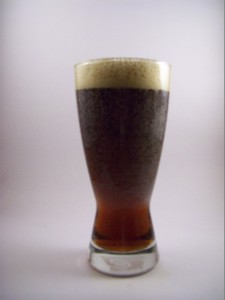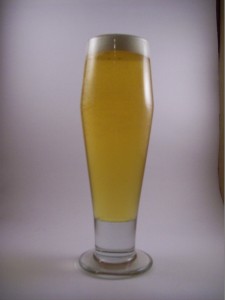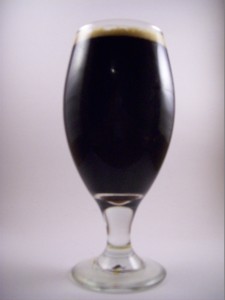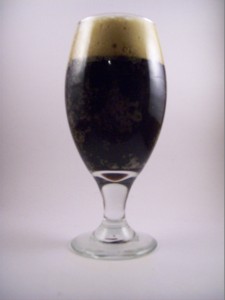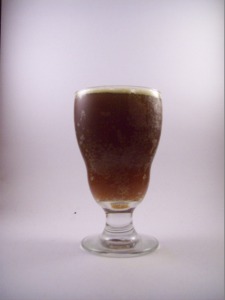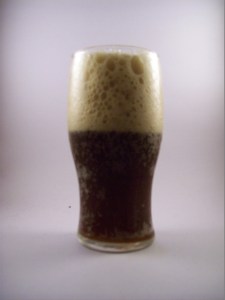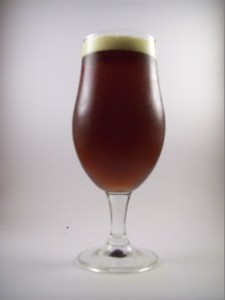The Munich Dunkel recipes starts, as one might expect, with Munich malt. Ours had nine pounds, fourteen ounces. A five ounce dash of Carafa II went in for color and that’s it for grist. Laid back, noble hopping was 1.20 ounces of Hallertauer as soon as it came to a boil and another half ounce of Hallertauer with twenty minutes to go. Again we used SafLager for fermentation. One lesson here (besides “lagers are a time consuming pain in the ass”) is that using a yeast source once from start to finish and tasting the result would be a good idea before committing to using it in multiple batches.
On the accident scale from delight to disaster the dunkel falls somewhere in the middle. The aroma has enough of a hint of tart caramel to give away the fact that something isn’t quite right. The flavor is purely tart. It’s not painfully sour. If it took a stylistic trip to the north and claimed to be from Berlin this beer would be much closer to the mark. Overall it’s tolerable but not something I really enjoy drinking. The lemony citrus portion of the sour is a little too strong and there’s also an off putting slickness in the body.
